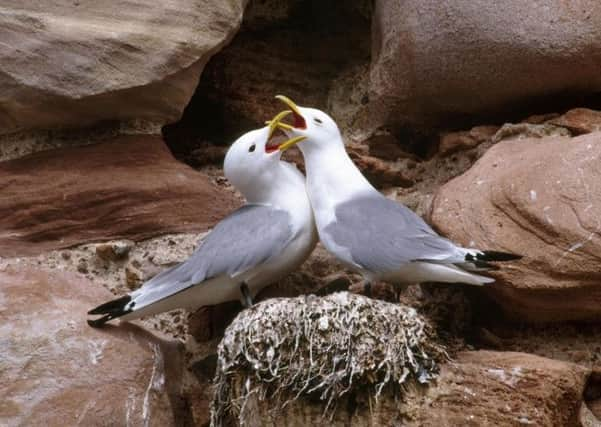Birdwatch: Kittiwakes return to Yorkshire cliffs


A life of foraging on tips is not for them, they are birds of the open seas only coming ashore in spring and summer to breed in huge colonies on cliffs.
This small, elegant gull is a familiar sight for visitors to the RSPB’s Bempton Cliffs reserve, where there is one of the largest concentrations in Britain. So it’s always a pleasure to find some away from their usual locations, and this week they were reported at a number of inland sites, both in Yorkshire and elsewhere.
Advertisement
Hide AdAdvertisement
Hide AdThese sightings were the result of the regular overland spring passage of kittiwakes that happens from February to April as they return to east coast breeding sites. They can be picked out among flocks of black-headed gulls by their jet black wing tips which lack the white spots or ‘mirrors’ that most other gulls have.
While most black-headed gulls are now sporting the chocolate brown hoods of their breeding plumage, kittiwakes have pure white rounded heads, dark eyes and small yellow beaks.
Kittiwake breeding colonies break up in July with the majority moving into the north Atlantic for the winter, joining many thousands of others that have bred elsewhere.
Some move as far west as the Newfoundland Banks where immature birds are likely to stay for up to two years until they are ready to return to breed in Britain.
Advertisement
Hide AdAdvertisement
Hide AdReturning males show a marked preference for the cliffs on, or close to, where they were born while females disperse more widely.
There is a return passage westwards in autumn; this time a mix of adult and juvenile kittiwakes.
Whooper swans have been on the move north back to Icelandic breeding sites with up to 500 on the move through Calderdale at the weekend, including the spectacle of 244 gathered on Mixenden reservoir, Halifax calling loudly.
Sightings along the east coast included an unseasonable sooty shearwater off Spurn - a great northern diver was also seen there - and up to four red-necked grebes which have continued to be seen between Sewerby and South Landing, Flamborough.
Advertisement
Hide AdAdvertisement
Hide AdAt least one short-eared owl continued to be seen at Buckton where a rough-legged buzzard was also reported while a long-eared owl was seen on Flamborough Headland.
The RSPB’s Bempton Cliffs Seabird Centre reopens, after £1.3m of refurbishment work, next Friday, April 3, at 9.30am. Entry is free for RSPB members, £3.50 per adult non-member, £2 per child aged five to 17, and £8.50 for a family of two adults and two children.
Great grey shrikes are still being seen at Heslington Tilmire, York and at Thorne Moors and Midhope Moor, South Yorkshire where the shrike killed and ate a snipe and tried to catch two more.
Cold northerly winds put a check on any large arrivals of spring migrants although there were some more wheatears, white wagtails, firecrests at Flamborough and Spurn and a black redstart at Kilnsea.